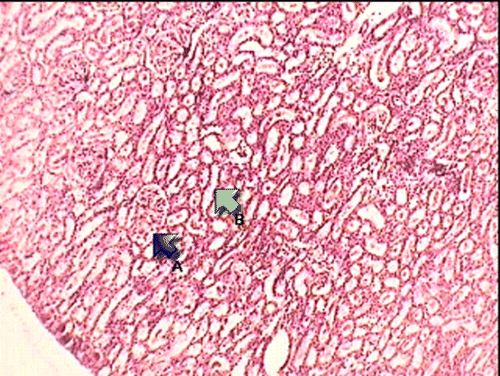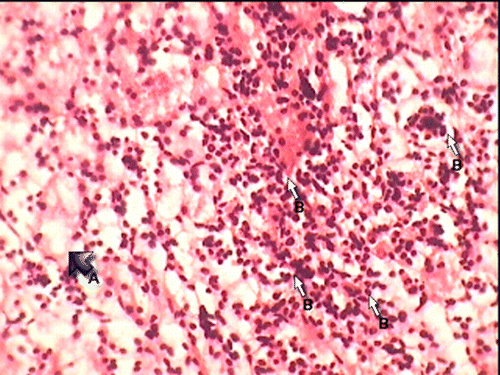Figures & data
Table 1. Effect of aqueous extract of stem bark of M. indica on SOD, lipid peroxidation, CT and RG levels.
Table 2. Effect of aqueous extract of M. indica on serum creatinine (mg/dl) and urea (mg/dl) levels.
Table 3. Effect of aqueous extract of M. indica on serum Na (mEq/L) and serum K (mEq/L) levels.
Figure 1. Histopathological examination of normal group, GM group and aqueous stem bark extract of M. indica treated groups. Group 1 (H&E×100): (A) intact glomerulus; (B) intact proximal convoluted tubules.

Figure 2. Histopathological examination of normal group, GM group and aqueous stem bark extract of M. indica treated groups. Group 2 (H&E×100): (A) marked glomerular changes; (B) extensive tubular necrosis; C: mononuclear cell infiltration in the interstitium.

Figure 3. Histopathological examination of normal group, GM group and aqueous stem bark extract of M. indica treated groups. Group 3 (H&E×400): (A) vacuolar changes in proximal convoluted tubules; (B) scattered mononuclear cell infiltration in the cortex.

Figure 4. Histopathological examination of normal group, GM group and aqueous stem bark extract of M. indica treated groups. Group 4 (H&E×400): (A) mild tubular degeneration and necrosis in the subscapular area; (B) multiple hyaline cast formation in the distal convoluted tubule; (C) pronounced dilatation of distal convoluted tubules.
